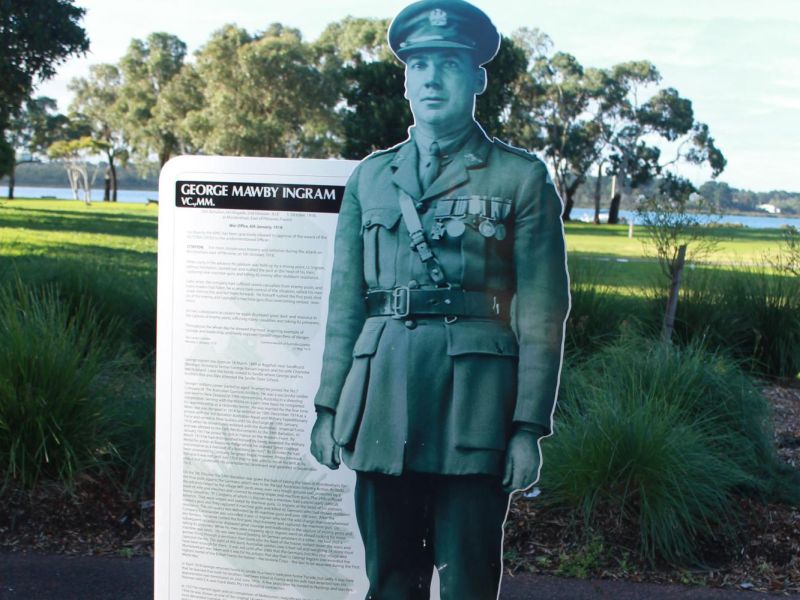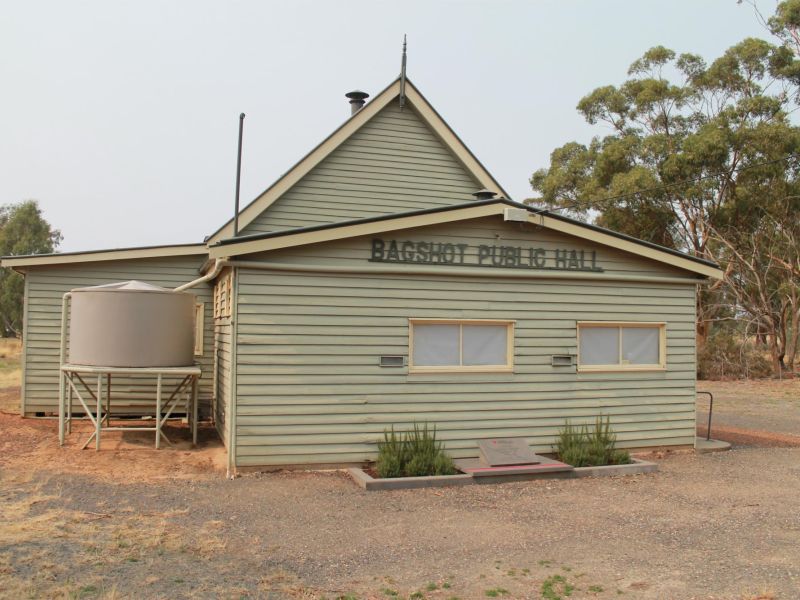George Ingram VC MM
There are two memorials to George Ingram VC MM in Victoria, namely at:
- the Bagshot Public Hall on the Old Murray Road, Bagshot, and
- the Hastings Foreshore, off Marine Parade, Hastings.
Born at Bagshot, north of Bendigo on 18 March 1889, George Ingram spent most of his youth at Seville, in the Yarra Valley east of Melbourne. After an apprenticeship he moved to Caulfield in Melbourne and worked as a carpenter until 1914.
In 1905, he had joined the Australian Garrison Artillery in the militia forces, and after the Great War had been declared, he enlisted into the 3rd Battalion, Australian Naval and Military Expeditionary Force on 10 December 1914.
He served in New Guinea until 19 January 1916, when he enlisted into the Australian Imperial Force (AIF), allotted to the 24th Battalion of the 6th Brigade. He arrived in France in early 1917 and within nine months was promoted from Corporal to Company Sergeant Major and awarded the Military Medal for “great courage and initiative as a member of a bombing section” at Grevillers, near Bapaume, in March, 1917. He was hospitalised from April to June and again over September and October 1917.
On 20 June 1918 George was commissioned a Second Lieutenant but three days later was evacuated with illness until 12 July 1918.
He was awarded the Victoria Cross for his part in the last Australian infantry action on the Western Front at Montbrehain on 5 October 1918. In that advance, the 24th Battalion suffered heavy casualties from the enemy in strongly defended positions. At the head of his platoon and without hesitation, Ingram rushed an enemy post, captured nine machine guns and killed 42 Germans who had shown stubborn resistance.
Later, he took control of the situation again and rallied his men under intense fire. They rushed another fortification and overcame serious resistance. Twice more that day he displayed great courage and leadership in the capture of enemy posts and the taking of 62 German prisoners.
He was promoted to Lieutenant on 24 October 1918.
On his return home in April 1919, George learned that both his brothers had been killed in France and his wife had deserted him. A few years later, he moved to Hastings, working at E.A. & Frank Watts Pty Ltd, and he remarried in 1927.
When Melbourne’s Shrine of Remembrance was dedicated on 11 November 1934, the Victorian Chief Commissioner of Police, Thomas Blamey, appointed decorated AIF men to form the Shrine Guard. As Ingram was the sole recipient of the Victoria Cross amongst this group, he became the unofficial leader of the Shrine Guard. At the same time, Walter Peeler VC, from Barkers Creek, near Castlemaine, was appointed the Shrine’s first custodian.
Ingram also served in World War II with the Royal Australian Engineers, attaining the rank of Captain.
He died of coronary vascular disease at Hastings on 30 June 1961 and was buried in the Frankston Cemetery.
 Western Front Association Central Victoria Branch
Western Front Association Central Victoria Branch
